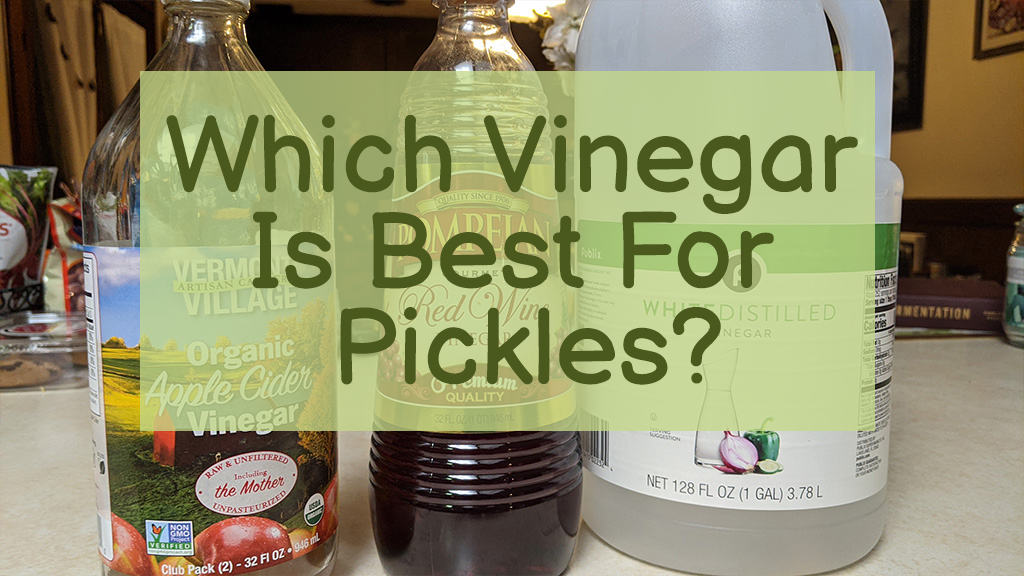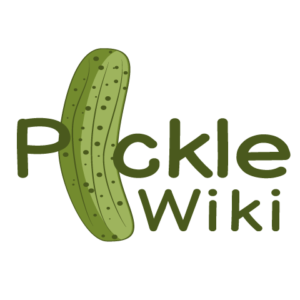Making your pickles can be a fun hobby, and many people enjoy adding atypical spices and herbs to give their pickles an extra punch. There are hundreds of recipes available on the Internet, but sometimes, a true artisan wants to branch off on their own and add something to make their pickles really stand out.
10 herbs that will really make your pickles stand out are tarragon, thyme, turmeric, mint, anise, lavender, ancho chili, marjoram, cardamom, and galangal. These are not the usual herbs that you would find in most pickles, that is why your pickles will really shine through the crowd.
Store-bought pickles can be great, but you don’t get to experiment with them in the same way you can when you make your own pickles. Pickles are also relatively simple to make. If you’re looking for something different than the standard recipes, here are ten herbs and spices you can add to make your next batch of pickles stand out.
10 Herbs and Spices to Make Your Pickles Stand Out
If you can think of an herb or spice, it’s probably been added to a batch of pickles by someone. Like garlic, dill, or bay leaves, the typical herbs are found in many recipes, so they won’t make your pickles stand out per se. You’ll have to find some unusual herbs and spices if you want to make your pickles unique. Ten herbs and spices you can try on your next batch include:
- Tarragon
- Thyme
- Turmeric
- Mint Leaves
- Anise
- Lavender
- Ancho Chilis
- Marjoram
- Cardamom
- Galangal
Throughout the rest of this article, we’ll discuss the spice or herb, where it comes from, it’s flavor profile, and provide a sample pickle recipe that uses that ingredient. Rest assured, you can feel free to experiment with your pickles and add a few from the list or combine with your own recipes to create out-of-this-world pickles!
An important thing to note in making pickles is that fresh herbs work best. Dried herbs lose a lot of their flavor, and it would be hard to get the powders or crumbled herbs off the pickles when you go to eat them. Fresh herbs can be added directly to the brine mixture, or they can be put in cheesecloth to let their flavor seep into the brine and then be removed easily later.
Tarragon
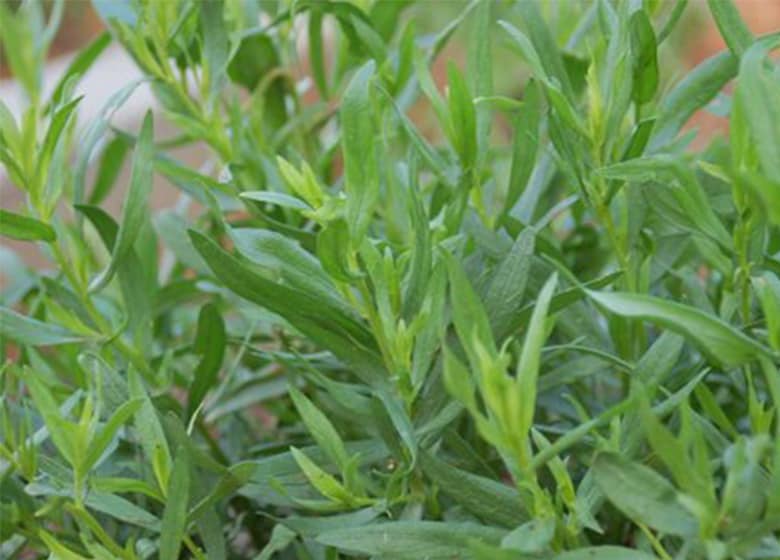
Tarragon is a leafy green herb that’s widely used in French cuisine. There’s also a Russian variety, which is generally considered to be inferior to the French version. It’s a tough plant to grow since it needs particular conditions in order to thrive. Tarragon is most famously known as an ingredient in the French sauce, Béarnaise.
Tarragon has a pungent taste and a subtle herb flavor, which means it’s better used in small quantities, or else it will overpower the dish. It’s often used to season fish and poultry in recipes, but it’s also used to flavor vinegar and in salad dressings and vinaigrettes. It’s often combined with other herbs to make a classic French seasoning, fines herbes.
If you’re looking for a pickle recipe that can use this unusual herb, here’s a great one from the New York Times. It combines tarragon with mustard seed, peppercorn, coriander, and bay leaves to give them a pleasant, tart taste. These pickles are very simple to make; all you need to do is boil some vinegar with sugar, add to a jar with the herbs in a bag, and let sit for 3 hours.
Tarragon will add an unusual, tangy taste to your pickles that you wouldn’t get without it, and if you decide to combine it with fennel or anise, you’ll get a really great pickle that will definitely stand out as a unique pickle flavor.
Thyme

You might not think of thyme as an excellent herb to add to a batch of pickles, but it can really add some spice to your next batch of pickled cucumbers if you decide to include it. Thyme is a shrub native to the Mediterranean, and it’s in the mint family as a matter of fact. It’s a popular ingredient in savory dishes like:
- Stews
- Soups
- Meat seasoning
- Fish
- Potatoes
Thyme adds a slightly woodsy flavor to dishes, although different varieties of thyme could add hints of various citrus fruits as well. Since it’s so incredibly versatile, thyme is a standard staple in many pantries across the United States, and it’s used to add another flavor to dishes because it’s not overwhelming.
If you’re interested in adding thyme to your next batch of pickles, look no further than this great recipe that combines the woodsy flavors of thyme with the sharp sourness of lemons and the heat of mariachi peppers to create a sweet and spicy pickle that’s about as unique as you can get from a batch of pickles.
Fresh thyme shouldn’t be too difficult to find at your local grocery store since it’s such a standard herb in many kitchens. You can use the leftovers to add another layer of flavor to your next stew, soup, potatoes, or meat dish.
Turmeric

Turmeric is yet another herb that’s found in many dishes, yet could be an unusual ingredient in your next jar of pickles. Turmeric is particularly known for its ability to give any dish a rich yellow color. Be careful, or it will stain your plastic storage containers!
You probably know turmeric as the main ingredient in curry, and it’s a standard ingredient in many Asian dishes. You may not be aware of the many possible health benefits of turmeric, including:
- Inflammation
- Pain relief
- Increases antioxidant capacity
- May help prevent cancer.
It’s been used for a wide variety of ailments by many different cultures, so it can’t hurt to add it to your diet by putting it in your next batch of pickles.
Turmeric can be very bitter, and, when used in large amounts, it’ll easily overwhelm any other flavors in the dish (if you’ve ever tasted curry, you know what we’re talking about). However, it has hints of spice in it as well, and its ability to dye just about anything makes it a common natural coloring agent in mustard.
Here’s a good, simple recipe using turmeric and dill to create some classic Southern tasting pickles with a vivid, yellow brine. It’s a simple recipe using things you might have already; it only takes two days to finish pickling and can be stored in the fridge for up to two months so you can have fresh pickles whenever you want.
Mint Leaves

Here’s a pickling ingredient you may not have considered before: mint. It’s not just for ice cream and holiday baking anymore. Mint is a common staple ingredient in many Mediterranean and Balkan recipes since it’s native to the eastern Mediterranean area. It’s known for its sweet taste that leaves the tongue feeling cool.
Mint is also renowned for its health benefits, which is why it’s often grown for extracting its essential oils for home scents and flavoring. It’s often used in teas and baked goods, though it can also be used as an additive to savory dishes to add a little sweetness. It’s also often used in lamb and poultry dishes in Middle Eastern and Greek cuisine.
If you’re looking for a way to give your pickles a unique, sweet zing, look no further than this quick pickle recipe that features mint as its main herbal ingredient. You’re not limited to cucumbers as a vegetable. It’s important to note; you can take pretty much any vegetable you want to pickle if you want a sweet, tangy, crunchy snack ready to go in your fridge!
Anise
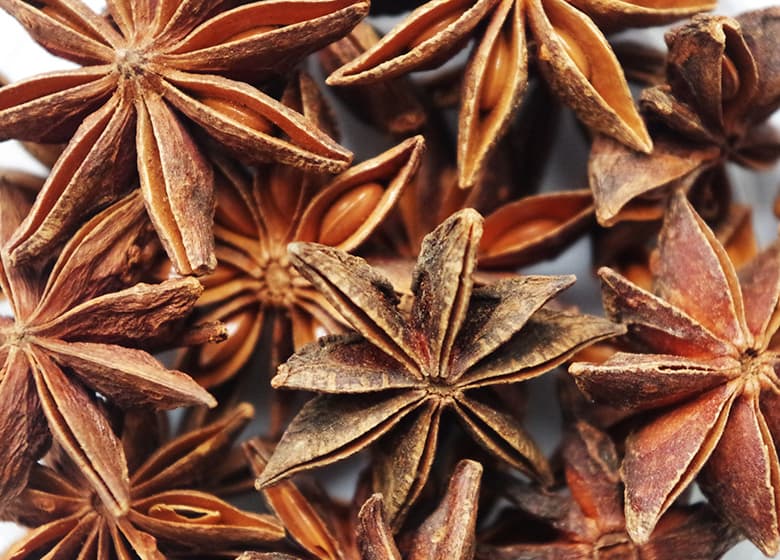
Another herb found traditionally in French cuisine is anise, which has several different varieties. Possibly the most well-known is star anise, so-called because the herb looks like a star. However, what you may not know is that anise in some form has been farmed in Egypt since 2,000 BC, which makes it an ancient herb indeed.
Anise is often used as a substitute for licorice flavoring in licorice due to its slightly sweet taste. It’s used in a pretty wide variety of dishes, from meats to dairy products.
Anise is renowned for its health benefits, including:
- decreasing bloating
- a way to settle the digestive tract
- an expectorant
- treatment for coughs or asthma.
Indeed, its health benefits are well-documented back to ancient times as a way to relieve pain.
Here’s a good pickle recipe that includes star anise as one of its herbs, along with the afore-mentioned turmeric. It uses a couple of different vegetables, but you can stick with just cucumbers or substitute whatever vegetables you’d like. They’ll come out sweet but will be a nice addition to any savory or spicy dishes, and even the brine can be used for cooking.
Lavender
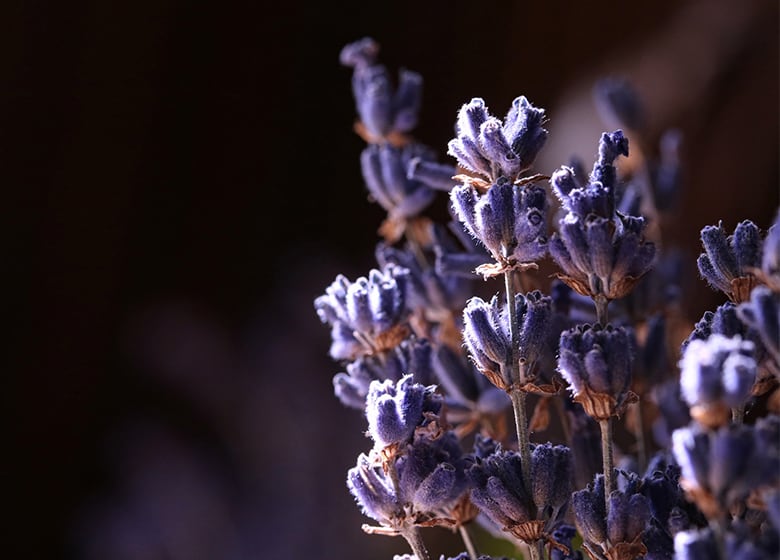
No, it’s not just a nice scent to usher in spring; lavender is also a potent herb that can be added to a variety of dishes to add its signature flavor to just about anything (including pickles). It’s especially well-known for its scent, and its essential oils are said to help with a variety of ailments.
Lavender is a member of the mint family of herbs and is another one that’s native to the Mediterranean. It’s has a storied history as a holy herb and as a way to freshen stale smells in a variety of applications, including the house, clothing, and even hair thousands of years ago.
Lavender has several alleged health benefits. It’s important to note that none of these benefits are scientifically proven to result just from lavender. Among these include:
- Sleep aid
- Skin blemish treatment
- Pain reliever
- Fight fungus
- Promote hair growth
Believe it or not, you can make pickles using fresh lavender to infuse your next crunchy batch with that iconic flavor. If you’re looking for a good pickle recipe that uses lavender, look no further than this one. Adding lavender will give your pickles a sweet, pungent taste that will also make them stand out at your next pickle bash or just when you decide to crunch into one.
Ancho Chiles
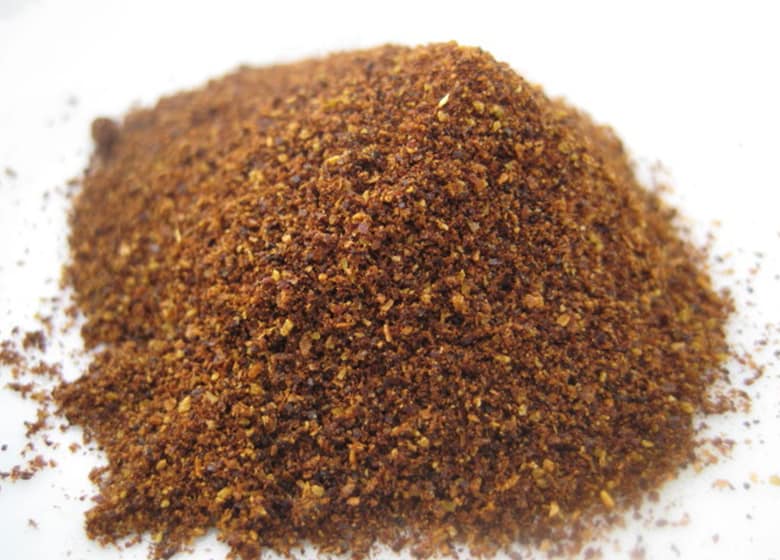
If you’re looking for some heat to your pickles, look no further than Ancho chiles. These mild peppers that are various poblano peppers aren’t too spicy, but they’ll add an interesting, Mexican-style flavor to your next batch of pickles if you choose to include them. They’re often sold dried or pulverized as a powder.
An ancho chile pepper is red, which means it’s been allowed to ripen longer than a green pepper. As it ripens, it becomes sweeter, which means that ancho chiles are among the sweeter types of Mexican chile peppers available. The taste has even been referred to as chocolatey because they’re so richly sweet.
Although this recipe is for green beans, you can easily substitute cucumbers to make some highly unusual pickles with a sweet, almost raisin-esque flavor to them. The chile peppers will add a touch of heat but not too much to handle, and you’ll be very happy with the results. The peppers are used to make the vinegar for the pickles.
Marjoram
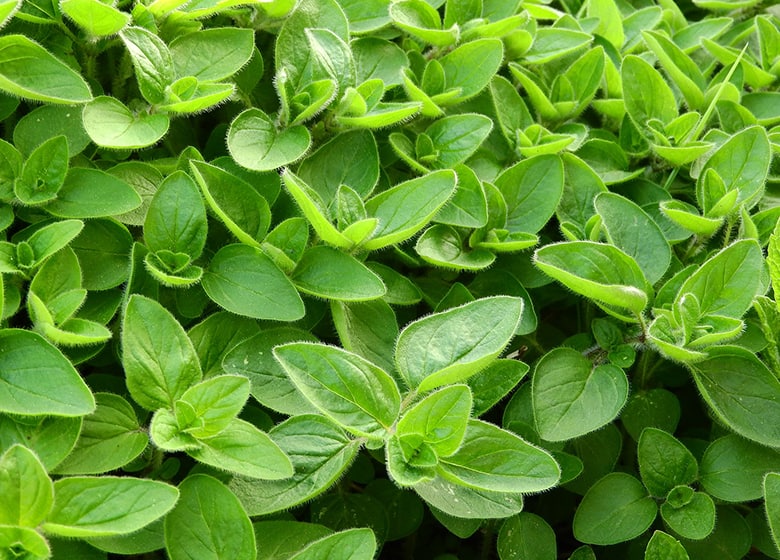
Marjoram is another herb in the mint family that hails from the world’s Mediterranean area, although it also grows in parts of Africa and Asia. It’s known for its woodsy, earthy flavor and is often compared with oregano and thyme in terms of the flavor profile. Marjoram is used in a wide variety of dishes, as well as an ingredient in herb mixtures.
Marjoram is also used in soups, stews, teas, and salads. It’s found either fresh or dried, although the dried variety loses a lot of its flavor. As mentioned above, basil, thyme, or oregano are all similar flavors, and they’re all used as substitutes for each other regularly.
You can easily add fresh marjoram to a jar of pickles to give them a balsam-pine taste, or you can make vinegar with them that you can then use to pickle your cucumbers. This recipe will take three to four weeks to ferment. All you need to do is pour some vinegar over some fresh marjoram leaves, then let it sit, shaking occasionally. You can then use that vinegar for pickling.
Cardamom

No, we’re not talking about a portmanteau for mothers who wear a lot of cardigans; cardamom is a spice that originally comes from Asia and is made from the seed pods of plants in the ginger family. It’s used in a variety of Iranian, Middle Eastern, and Swedish dishes and an ingredient in garam masala, a seasoning blend.
Cardamom is often used in sweet and savory dishes because it has a strong, sweet flavor, with hints of lemon and mint. It’s usually added whole to dishes, and then the pods are taken out since ground cardamom often loses much of its flavor once it’s ground up.
Sweden has many recipes that use cardamom, where it’s often paired with cinnamon or nutmeg to create autumn-flavored dishes and baked goods. It’s a staple in Swedish and Scandinavian cuisine. It’s also a pretty standard flavor in Indian dishes. Some popular Swedish dishes that use cardamom include:
- Swedish cardamom buns (Kardemummabullar)
- Cardamom pancakes
- Cardamom flavored oatmeal
- Krumkake, a thin wafer-like cookie
This recipe, called Quick Indian Pickles, draws upon the unique flavor of cardamom to give the pickles a distinctly Indian flavor. It gives them a spicy, sour flavor that goes well with other Indian dishes or just with a sweet or savory dish as a nice crunchy side.
Galangal
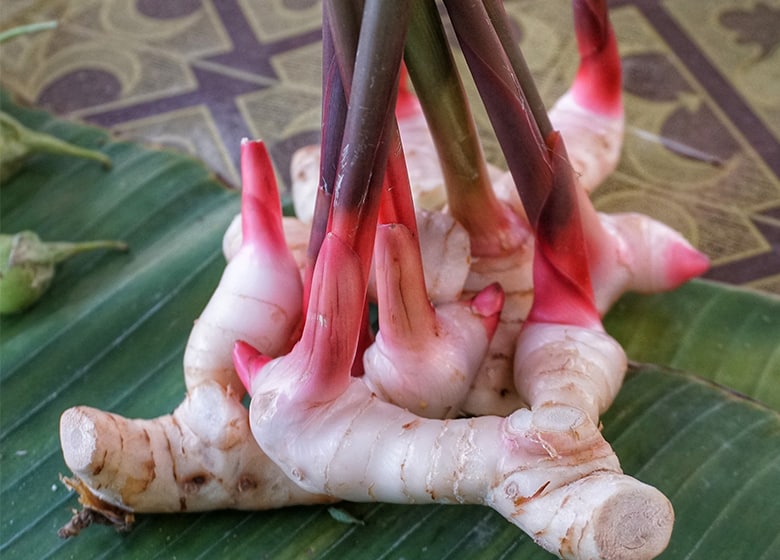
We saved the most unusual herb for last, and you may never have even heard of galangal before. Luckily, this ginger family member is a great addition for pickles, giving them a citrusy flavor that’s hard to match. Galangal is native to southeast Asia and is the main staple in many of the dishes from that part of the world.
Galangal and ginger are called rhizomes, a type of creeping stem system from plants that send out offshoots to grow new offshoots. Although they both look very similar, galangal and ginger have extremely different tastes. Galangal has a piney, citrusy flavor and is very sharp, while ginger is spicy and sweet. Each will give a dish a very different flavor.
This great, Middle-Eastern inspired pickle recipe pairs galangal with red chiles and curry. Although you may have to find an Indian market to find some galangal, the result will be a spicy, flavorful pickle that’ll fly off your fridge’s shelves once they’ve finished. They’re incredibly versatile and can be paired with a variety of dishes, meats, and cheeses.
Closing Thoughts
Whether you’re new to the world of pickling or you’re a seasoned veteran, you should always be looking for a new way to make a unique pickle. It’s a fun pastime that puts food on the table for yourself and your loved ones, and you can make so many different varieties of pickles with just a few different herbs.
Hopefully, this list of herbs inspired you to go out and pick up a few new herbs for your next batch of pickles. Many of the herbs on this list can be paired with others on the same list, and they’ll all give your pickles a unique flavor that will truly make them stand out.
